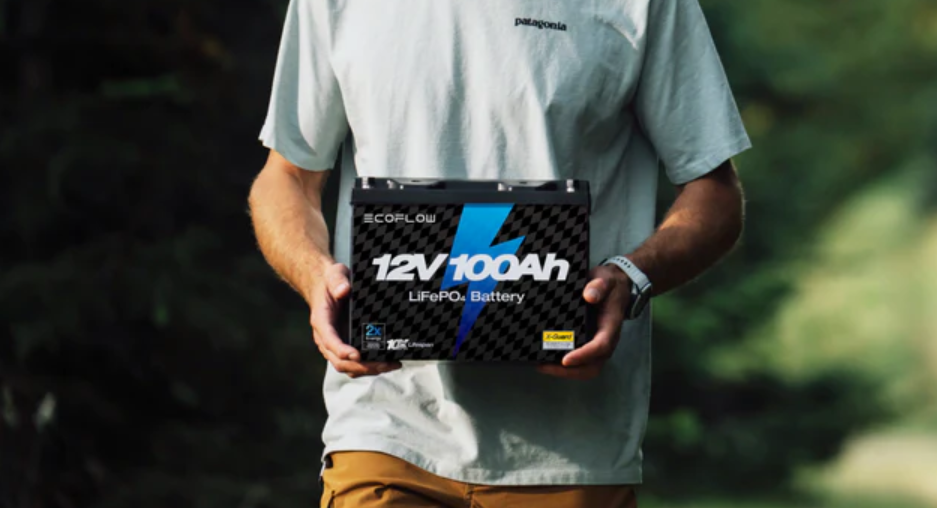Fishing Boats in Canada: Buying and Care Guide 2025
Fishing is more than just a hobby in Canada—it’s a beloved tradition and an essential way of life for many Canadians. From the calm freshwater lakes of Ontario to the rugged coastal waters of British Columbia, the right fishing boat makes all the difference in your experience.
Whether you're a seasoned angler or a weekend hobbyist, selecting the perfect boat and maintaining it properly are key to successful outings. In this guide, we’ll walk you through the most popular types of fishing boats in Canada, the features that matter most, maintenance essentials, and how to keep your electronics running smoothly with solar power on board.
Popular Types of Fishing Boats in Canada
We begin by looking at the most commonly used fishing boats across Canada. Each type caters to specific environments and angling styles.
Jon Boats - Flat-bottomed and lightweight, Jon boats are excellent for calm lakes and shallow rivers. Ideal for beginners or solo anglers.
Bass Boats - Built for speed and accuracy, bass boats come with high-powered motors, flat decks, and livewells for freshwater game like bass.
Deep-V Boats - Designed for choppier waters, these boats provide a smoother ride and are often used on larger lakes or bays.
Centre Console Boats - A favourite for saltwater fishing, they offer 360-degree access, making it easier to reel in fish from any angle.
Pontoon Boats - Perfect for relaxed family fishing. They’re highly stable and can comfortably accommodate multiple anglers.
Aluminum Fishing Boats - Lightweight yet durable, these are easy to trailer and resistant to corrosion, great for both beginners and experienced anglers.
Kayak Fishing Boats - Quiet and nimble, fishing kayaks are gaining popularity for remote lake access and a more intimate angling experience.
Cuddy Cabin Boats - Equipped with small shelters for gear or resting, these boats suit longer trips or overnight fishing excursions.
Key Features to Consider When Choosing a Fishing Boat
Wondering how to choose the right fishing boat? The right fishing boat is more than picking the biggest or flashiest model, but about selecting a vessel tailored to your fishing habits, preferred locations, and level of comfort. Here are the key features every angler should consider when buying a fishing boat.
Hull Design & Stability
The hull is the backbone of your boat, and its design influences how the boat performs in various water conditions. Typically:
Flat-bottom hulls: Ideal for calm, shallow waters, such as inland lakes and rivers. They offer excellent stability when stationary but can feel rough or unstable in open, choppier waters.
Deep-V hulls: Designed to cut through waves, making them perfect for coastal fishing or large, windy lakes.
Modified-V hulls: Offer a balance of versatility, suitable for anglers who fish both in calm and rough waters.
Storage Capacity & Livewells
Smart storage is a must. Look for:
Built-in compartments: Tackle boxes, rods, coolers, and safety gear to keep the deck clutter-free.
Livewells: Aerated tanks to keep bait or catches alive. Boats with dual livewells let you separate species or manage bait more efficiently—ideal for tournaments or long trips.
Deck Layout & Seating Comfort
A thoughtfully designed deck boosts both comfort and function. Consider the following choices:
Casting platforms or open walkways make it easier to fish from any position.
Swivel seats offer a better range of motion, while bench seats work well for group outings.
Fold-down or modular seating is perfect if your boat also serves recreational purposes.
Onboard Power Supply & Electronics Integration
Today, most anglers rely heavily on electronics like fish finders, GPS, and LED lighting. So, your boat should support:
A reliable marine battery system: preferably AGM or LiFePO4 for long-lasting, safe power.
Portable backup power: Portable batteries, like the EcoFlow Lithium 12V 100Ah Deep Cycle LiFePO4 Battery, are excellent for extended power. With 1280Wh capacity, 6000+ cycles, and solar compatibility, it’s ideal for powering electronics off-grid, even in harsh marine conditions (IP65 rated).
Trailer Compatibility & Mobility
Portability matters anywhere you go. Small fishing boats (e.g., Jon boats, aluminum boats) are easy to trailer and launch, while larger boats (like center consoles) need reinforced trailers and more powerful towing vehicles. Make sure your trailer matches your boat’s weight and length and is compatible with local ramp access and road regulations.
EcoFlow Lithium 12V 100Ah Deep Cycle LiFePO4 Battery
With 1280Wh capacity and 6000+ cycles of dependable energy, the EcoFlow Lithium 12V 100Ah Deep Cycle LiFePO4 Battery is the ideal power source for fishing boats. Weighing 50% less than lead acid with IP65 waterproof protection and advanced X-Guard BMS, it's built for marine environments, keeping your gear running reliably, safely, and longer on the water.

How to Maintain Your Fishing Boat
After you buy your fishing boat, it’s important to maintain it properly. Regular upkeep extends its life and helps avoid costly repairs down the road. Here are some essential maintenance tips.
Clean After Every Use: Salt, algae, and fish residue can quickly build up on your boat’s hull and hardware. Rinse with fresh water after each outing—especially if you fish in saltwater. Use marine-safe soap and non-abrasive brushes to avoid surface damage.
Check Engine & Fluids: Your motor is the heart of your boat. Before every trip, inspect the fuel level, oil condition, and battery charge. Replace fuel filters and spark plugs seasonally. A clean fuel system improves performance and avoids breakdowns mid-lake.
Inspect Hull & Propeller: Regularly check the hull for cracks, gouges, or punctures. These can worsen over time and compromise safety. Inspect the propeller for dings, bending, or fishing line tangles. Damaged props can lower performance and strain your engine.
Winterize for Off-Season: Canadian winters are harsh. To protect your boat, fully drain water from tanks and plumbing, add a fuel stabilizer, and fog the engine. Store indoors if possible or cover with a heavy-duty tarp. Battery disconnection and anti-freeze for the motor are also essential.
How to Power Your Fishing Boat Electronics with a Solar Generator
As we know, fishing boats often rely on electronics like fish finders, GPS chartplotters, sonar, and LED lighting—all of which require dependable power. A solar generator offers a quiet, clean, and renewable way to stay powered on the water without relying on fuel or shoreline hookups. Here’s how to set it up:
Step 1: Choose a Reliable Solar Generator
Select a solar generator that offers enough capacity to power all your onboard electronics. Look for high output wattage, long battery life, and multiple AC/DC ports. The EcoFlow DELTA 3 Plus Portable Power Station is a strong option, offering up to 5kWh of expandable storage, 1800W continuous output, and 500W solar charging input—ideal for powering essential gear during extended trips.
EcoFlow DELTA 3 Plus Portable Power Station
Step 2: Connect Solar Panels for Recharging
Pair your solar generator with solar panels that match its charging specifications. EcoFlow’s 220W bifacial solar panels are highly recommended, which can produce up to 25% more solar energy. Mount or position panels where they’ll receive maximum sunlight, either on deck, canopy, or dockside. This ensures you can recharge during the day and remain power-independent throughout your trip.
Step 3: Plug In Your Boat Electronics
Use the appropriate ports to connect electronics such as fish finders, aerators, bilge pumps, and navigation lights. Make sure your total draw stays within the generator’s continuous output rating to avoid overloads. Many systems allow the simultaneous use of AC and DC ports.
For small personal electronics like smartphones, consider a convenient alternative: the EcoFlow Power Hat. Built with solar panels integrated into the brim, this wearable charger features both USB-A and USB-C ports, allowing you to charge two devices simultaneously. Meanwhile, it provides 100% UV protection and a sun protection factor of UPF50+, helping shield you from harmful sun exposure while keeping your gear charged.

Step 4: Monitor and Manage Power Use
Most modern generators, including EcoFlow, come with built-in displays or companion apps to monitor energy usage. Keep an eye on input, output, and remaining battery life to plan recharging and avoid unexpected shutdowns. This helps you manage energy efficiently on longer fishing expeditions.
Conclusion
As we’ve seen, choosing the right fishing boat involves more than picking a brand or style—it’s about matching features to your fishing environment, power needs, and personal comfort.
By understanding the different types of boats available, knowing which features to prioritize, properly maintaining your vessel, and equipping it with reliable systems like solar generators, you’ll be set for years of smooth and successful angling. Whether you fish solo or with family, the right boat makes every outing safer, more efficient, and far more enjoyable.
FAQs
What kind of boat is best for fishing?
The best fishing boat depends on your fishing location and style. For calm inland lakes, Jon boats or aluminum boats are affordable and versatile. If you prefer large lakes or rougher waters, a Deep-V boat offers smoother rides. Centre console boats are ideal for saltwater, while pontoon boats are perfect for relaxed family fishing. Kayaks are great for stealthy solo trips. Choose based on water conditions, group size, and gear requirements.
What is the word for a fishing boat?
A fishing boat can be referred to by many names depending on its type and use. Common terms include angler boat, bass boat, trawler, or simply fishing vessel. Recreational users often say "fishing boat," while commercial operations might refer to trawlers or longliners. In general Canadian usage, "fishing boat" is the umbrella term for all these variations.
How much does a Lund fishing boat cost?
In Canada, Lund fishing boats typically range from $15,000 to over $70,000 CAD, depending on the model, motor type, size, and included features. Smaller aluminum models with tiller steering cost less, while larger sport-fishing or family-friendly models with premium electronics and trailers sit at the higher end.
What is the most reliable brand of boat?
Some of the most reliable fishing boat brands in Canada include Lund, Alumacraft, Tracker, Princecraft, and Boston Whaler. These manufacturers are known for their durability, solid build quality, and customer satisfaction. Lund, in particular, is praised for its all-welded aluminum construction and excellent resale value.